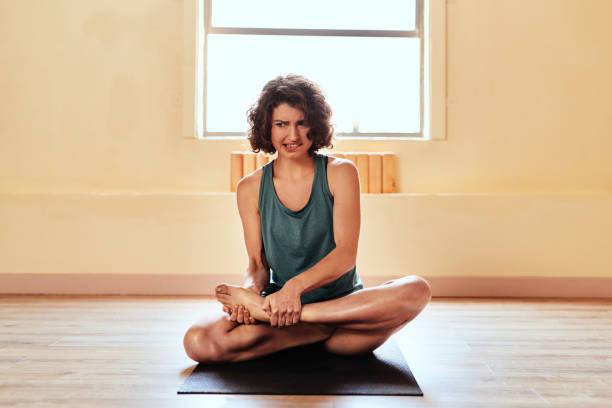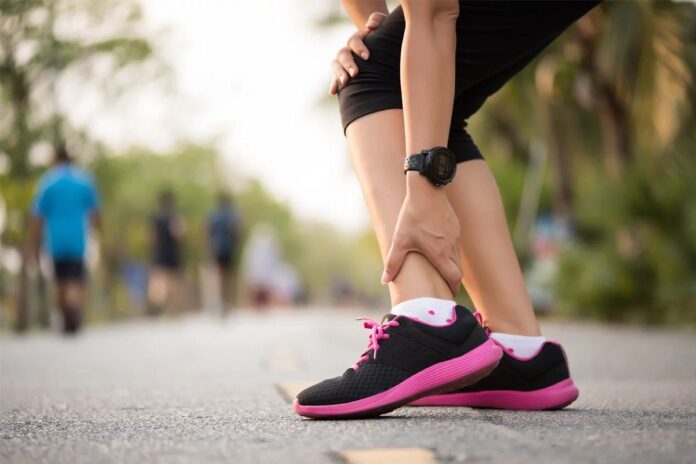Strains and sprains are the most common types of acute injury—that is, an injury that usually results from a single, abrupt incident causing sharp pain, often accompanied by swelling. Strains and sprains are especially common among eager weekend athletes who don’t know the limitations of their unconditioned muscles and joints.
- Strains. Some muscle fibres may rip when a muscle is overextended. A pulled muscle is a common term for this. Mild strains are typically simply bothersome; the tears are minute and easily mend with rest. Sharp discomfort with a loss of strength and movement are signs of more severe strains, which also cause a greater amount of fibre breakdown.
- Sprains. Unlike sprains, which harm joint capsules and ligaments (the bands connecting the bones), strains affect the muscles. Sprains, like strains, can range in severity from tiny tears to full ruptures. However, sprains are usually more severe than strains because a ruptured ligament can cause bones to move out of place and harm the tissues in the area. They also frequently take longer to recover.
Any joint can be sprained, but because of its construction and the fact that it must support your body weight, the ankle is the most frequently sprained joint—in fact, an ankle sprain is probably the most common sports injury. The knee, too, is vulnerable because it must absorb twisting stress every time the body rotates from the hips.
Table of Contents
Symptoms of strains and sprains
Strain
- Muscle stiffness, soreness, and generalized tenderness several hours after the injury.
- Swelling of the injured muscle.
- In some cases, skin discoloration appearing several days later.
Sprain
- Mild to severe pain when the injury occurs.
- Joint tenderness and possible swelling.
- Bruising that can be noted immediately or up to several hours after the injury.
- Inability or difficulty moving the injured joint.
What causes strains or sprains?
Strains occur when muscles or their tendons are stretched to the point that their fibers actually start to tear. This can happen when you lift a heavy weight or suddenly overextend a muscle—for instance, when swinging a golf club, sprinting to catch a bus, or stretching to catch a Frisbee, or when doing jumping activities in the gym. The most common sites for strains are the hamstring and quadriceps muscles in the thigh, and the muscles in the groin, shoulder, and calf —all large muscles that are used for sudden powerful movements. Strains also occur to a muscle that has been previously injured—even slightly—and never properly rehabilitated. Cold, fatigue, or immobilization in a cast reduces blood flow to the muscles and lessens muscle elasticity, increasing the risk of strains.
Sprains are most often the result of a sudden force, typically a twisting motion, that the surrounding muscles aren’t strong enough to control. As a result the ligaments, which usually wrap around a joint, get stretched and torn.
What if you do nothing?
In most cases recovery from a minor muscle strain requires nothing more than rest. However, if you are active and exercise regularly, strengthening and stretching will usually be necessary after recovery to prevent a recurrence of the injury. Sprains usually require attention (see Home Remedies section below) to reduce swelling and lessen pain and reduce the risk of a recurrence. When severe pain or swelling occurs, you need to consult a doctor; the injury may turn out to be a severe sprain or a fracture, either of which require medical attention and possibly a splint or cast.
Home remedies for strains and sprains

Mild to moderate muscle strains and minor sprains can usually be self-treated at home with these measures. But it can be difficult to determine the severity of a sprain on your own. And even minor ankle sprains shouldn’t be taken lightly. Without proper treatment and rehab, ankle sprains can lead to long-term problems—notably chronic ankle instability and leg muscle weakness.
- RICE the injured area. The acronym RICE—rest, ice, compression, and elevation—is the key to treatment. These steps reduce swelling, slow internal bleeding, and reduce pain. With most injuries, swelling starts immediately; to reduce it, apply ice right away to the injured area. Wrap an elastic bandage snugly over the ice and around the injured site. Leave the ice and bandage in place for 20 minutes, then remove the ice, rewrap the injury, and elevate the injured part above the heart to help drain excess fluid from the damaged part. Depending on the severity of your injury, continue with the ice therapy every two hours for up to 24 hours to 48 hours. Keep the muscle or joint elevated as much as possible until the swelling subsides.
- Take OTC pain relievers. Nonprescription NSAIDs (aspirin, ibuprofen, or naproxen) will alleviate minor pain symptoms, though they won’t promote healing.
- Keep the injured muscle or joint compressed. It should remain in an elastic bandage or elastic sleeve except when bathing.
- Start gentle exercise. Once pain and swelling have stopped, you can begin gentle stretching exercises to restore flexibility. Gradually add strengthening exercises to strengthen muscles and connective tissues around the affected joint. In the case of muscle strains, eccentric exercises—in which the muscle lengthens when contracting—may be recommended. Speak with your physician, who may refer you to a physical therapist who can recommend specific exercises.
How to prevent strains and sprains
- Exercise regularly. Participate in regular, moderate exercise to keep your muscles and joints strong and flexible. Stretch your muscles after exercise. Also include several weekly strength-training sessions focusing on your major muscle groups. Strong muscles are an injury safeguard.
- Warm up sufficiently. All the muscles needed for your future action should first be warmed up. Blood flow and body temperature are increased during exercises like stationary cycling for 5 to 10 minutes or place-based jogging. You can warm up by practising the sport or exercise you’re going to do gradually. The typical sign that you’ve warmed up enough is a light perspiration.
- Consider taping or wrapping a weak joint. Good taping can add stability to an injured joint or muscle and make it less likely to be reinjured.
When to call your doctor
Contact your physician if you are in great pain or if the injured area becomes severely swollen and/or badly discolored. Also contact your doctor if pain or swelling persists or increases more than two or three days after the injury despite your self-care measures.
What your doctor will do
A careful assessment will be done for a mild to severe muscle tear. The physician will feel the injured site and compare it with the uninjured side to determine the degree of damage. The course of treatment will depend on how serious the injury is.
Also Read: Shin Splints: Causes and Treatments
For a moderate to severe sprain, an x-ray of the injured area may be taken to rule out a broken bone. A cast may be applied to a severely sprained joint; surgery may also be recommended, though this is rare.
In less severe cases pain medication may be prescribed and crutches or a sling may be recommended until the injury heals. After the pain has subsided, your physician or a physical therapist can help develop an appropriate program of exercise to regain mobility and strength and prevent reinjury.




